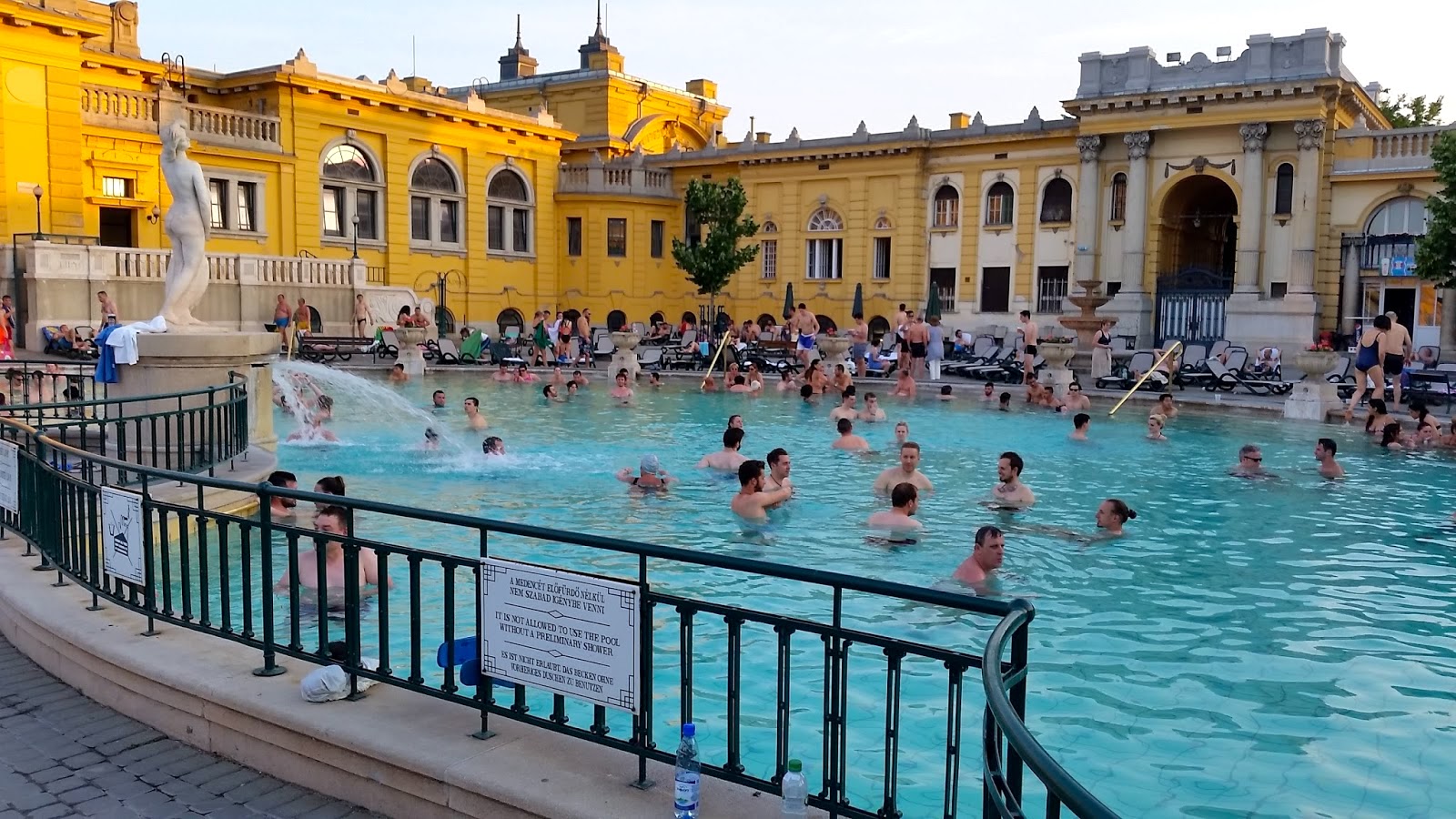Two Nights and One Day in (Buda)Pest
I arrived in Budapest from Prague via train in the late afternoon. The station is reminiscent of the Belle Epoque with a gorgeous, large clock and domed, wrought-iron and glass ceiling, though it is now a bit run down. In a certain sense, that's true of Budapest as a whole from what I can tell (though I never actually made it to the Buda side of the river). Its grand avenues with sidewalks that could fit eight people across, and apartment buildings with floors twice the usual height, reflect a rich, historic past. But on the outsides of those buildings the plaster is crumbling off and the ornate carvings have darkened as years of Soviet rule had hindered their maintenance.*
I loved it! It was grand yet accessible, something you don't get in New York anymore. With that in mind, it's not surprising that it's also a very affordable city. I took Uber to places too far to walk to, and generally my trips were $5. I also had lovely meals for maybe half the price that I would have paid in my home city.
Night One
My first night, after a very nice dinner on a restaurant patio across from the Opera House (which has a good tour, btw), we walked over to the ruin bars in the former Jewish neighborhood. If I lived in Budapest this is where I'd be hanging out, though my delight in the discovery became twinged with sadness when I learned of its history. Nearly 50% of Budapest Jews were murdered during the Holocaust. Like the other areas of the city, the buildings in this neighborhood were large and looming, so to imagine half of entire district missing...it's a lot.
But something positive was eventually born of it in the early 2000s—"ruin bars." The first of which was Szimpla Kert. Szimpla Kert opened in 2002 in one of these abandoned buildings in the neglected neighborhood and filled each floor with eclectic furniture and art, draped fabric over the open-air courtyard, and built multiple bars on each floor. It reminds me of something that should exist in Bushwick, but doesn't—certainly not on this scale. Many other bars followed suit and a new neighborhood was born from the ruins of the past.
Night Two
The following evening we had dinner at another venue in the 'hood that I would love to regularly attend, Bródy House. It's a society club, also set up in an abandoned building, with outdoors dining, private dining rooms and bedrooms to let. And, of course, several bars. Though it's more upscale than Szimpla Kert, it still feels authentically arty and hip. Like any club it has rules, but Bródy House's rules are ones easy to get behind—no selfies or photos of strangers, no name dropping or other braggadocious behavior, no hitting on your neighbor—aka rules to keep the attitudes in check of those who are self-impressed for belonging to a members-only club. My guess is that these rules make it a popular place for low-key celebs, seemingly confirmed by the fact that we saw one there.(Sorry! Couldn't help it. But, of course, no name-dropping or photos allowed.)
One Day
My daytime excursions were just as awesome and made me envious to live there. For history and culture, I visited two houses of worship—St. Stephen's Basilica and The Great Synagogue. Both interiors were beautiful. Outside of the Synagogue are the mass graves of thousands of the city's Jewish victims, now turned into a garden memorial. The garden is as beautiful as it is heartbreaking.
The Basilica has two unusual attractions: an elevator to the top with views of the whole city and the mummified right hand of St. Stephen. I don't know who he is, but I went to see his hand encased in a glass box...and awkwardly hovered behind the kids who put in change to turn on the light to illuminate it.
I also didn't pay to go to the top of the church (mostly because I missed the entrance), but that turned out to be okay because the rooftop of the restaurant in which we brunched (360 Bar) had the same view. Gorgeous! And it had chill music and good food to boot.
After eating and a pleasant stroll to pick up swimsuits, we headed to City Park to go to the mineral baths. Going to the baths is a Budapest tradition. The baths contain many pools of various temperatures and sizes, are open to the public, and reasonably priced for the masses. I can't speak for all of them, but the City Park baths also had saunas and steam rooms, a lap pool, and a restaurant.
I made a point of going into every bath, including the very deep, freezing-cold one, designed for a quick jump in with a ladder for quick escape (though some dude was just hanging out in there!). My favorite was the large outdoor mineral pool, in which old men played chess on water-level boards and one could stand under the fountains and let the heavy water pressure massage one's head and shoulders. Again, if only I lived there...
___
*Fun fact: Under the USSR, I've been told, few people learned English as a foreign language (most learned either Russian or German, which makes sense given the Cold War), and so you'll find that it's difficult to converse in English with anyone middle-aged or older. But those in their mid-30s or younger speak wonderful English. Keep this in mind if you need to ask for help on the street!










